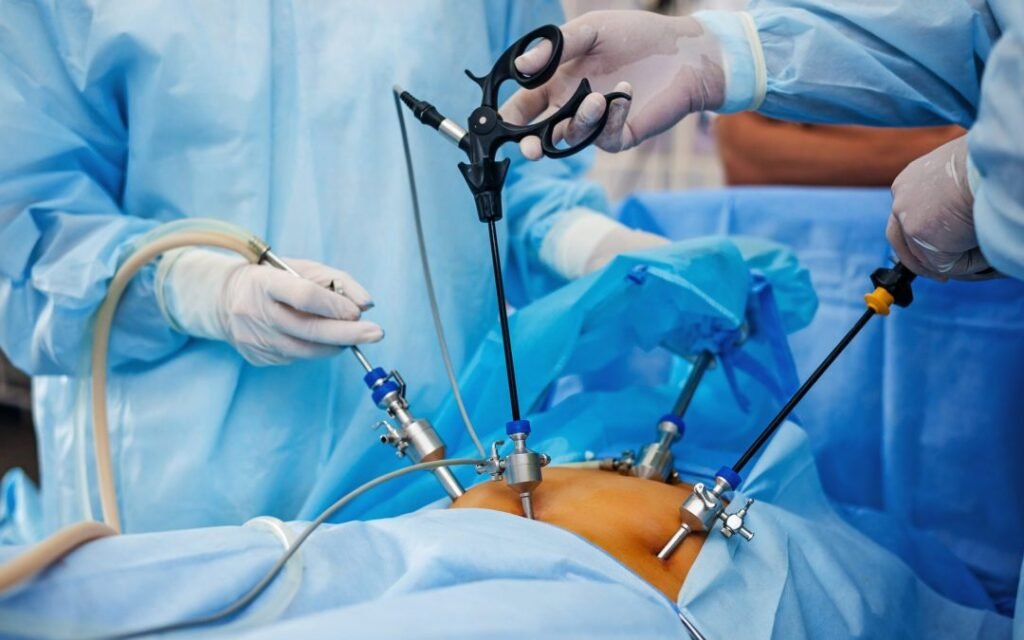
Laparoscopic surgery, also known as keyhole surgery or minimally invasive surgery, is a modern surgical technique in which operations are performed through small incisions (typically 0.5–1.5 cm) using a camera and specialized instruments.
How It Works
- A small incision is made, usually near the belly button.
- A thin tube with a camera (laparoscope) is inserted to view the inside of the abdomen or pelvis.
- Other small incisions are made to insert surgical tools.
- The camera sends images to a monitor, guiding the surgeon.
- The abdomen is inflated with gas (usually carbon dioxide) to create space for visibility and movement.
🔹 Common Procedures Done Laparoscopically
- Gallbladder removal (cholecystectomy)
- Appendix removal (appendectomy)
- Hernia repair
- Hysterectomy (removal of the uterus)
- Ovarian cyst removal
- Bariatric surgery (weight loss surgery)
- Colorectal surgery
- Diagnostic laparoscopy (to explore causes of abdominal or pelvic pain)
🔹 Advantages of Laparoscopic Surgery
Benefit | Description |
✅ Smaller Incisions | Less scarring and better cosmetic results |
✅ Faster Recovery | Patients often go home the same or next day |
✅ Less Pain After Surgery | Compared to open surgery |
✅ Lower Risk of Infection | Due to smaller incisions |
✅ Shorter Hospital Stay | Often just 1–2 days or outpatient |
✅ Early Return to Work | Usually within a week or two |
🔹 Risks and Complications (Though Rare)
- Bleeding
- Infection at incision site
- Injury to internal organs (e.g., bowel, bladder)
- Reactions to anesthesia
- Blood clots
- Gas-related shoulder pain after surgery
🔹 Who is a Candidate for Laparoscopic Surgery?
Most people are eligible, but laparoscopic surgery may not be ideal in cases such as:
- Severe obesity
- Extensive internal scarring (from previous surgeries)
- Emergency situations with excessive bleeding
- Very large tumors or complex anatomy
🔹 Postoperative Recovery
- Mild pain or bloating is common
- Rest for a few days; avoid strenuous activity for a few weeks
- Wound care: keep incision sites clean and dry
- Gradual return to diet and normal activity
🔹 Laparoscopy vs. Open Surgery
Feature | Laparoscopic Surgery | Open Surgery |
Incision size | Small (0.5–1.5 cm) | Large (5–20 cm) |
Recovery time | Shorter | Longer |
Pain after surgery | Less | More |
Scarring | Minimal | More noticeable |
Risk of infection | Lower | Higher |
❗️ When to Seek Medical Attention After Laparoscopy
- Persistent or worsening pain
- Fever or chills
- Redness or discharge at incision sites
- Difficulty urinating or bowel movements
- Shortness of breath



